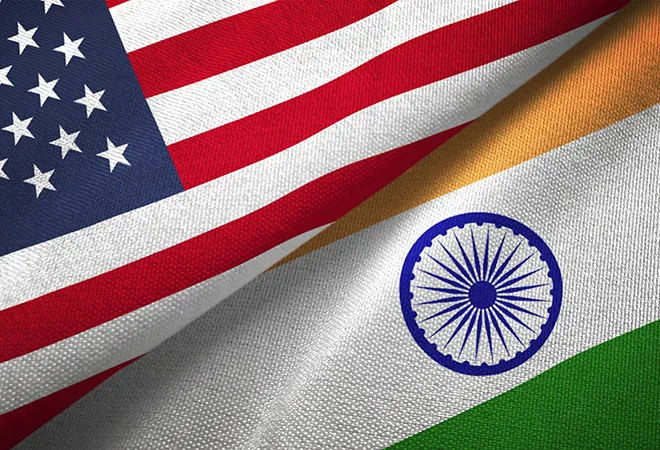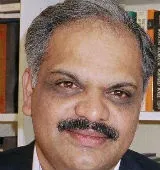-
CENTRES
Progammes & Centres
Location
New Delhi is pursuing a strategic partnership with the US because it is in India’s interest, and it is essential to keep in mind the core condition that drives this interest.

Image Source: Glenn Harper — Flickr/CC BY-NC-ND 2.0
There is considerable disquiet in New Delhi about the state of its relations with the US. This is odd at one level, considering that India and the US are about to hold the first of their 2+2 strategic dialogue, something that would have been difficult to imagine India doing just a few years back. Moreover, India is also reportedly close to signing the second of the “foundational” agreements for strategic cooperation with the US, called CISMOA, the Communication and Information Security Memorandum of Understanding (or COMCASA, the Communication Compatibility and Security Agreement, its India-specific version), another indicator of where Indian decision-makers think India’s interests lie. Nevertheless, New Delhi worries: US sanctions loom unless some solution is found to both the S-400 issue and, less seriously, on Iranian oil supplies, in addition to bilateral trade issues that President Trump is keenly interested in. As they deal with these issues, Indian decision-makers should be careful not to miss the woods for the trees. New Delhi is pursuing a strategic partnership with the US because it is in India’s interest, and it is essential to keep in mind the core condition that drives this interest.
The S-400 issue is without doubt the most serious of the problems that the 2+2 dialogue will address. India has good reason to want to buy this air defense missile from Russia, given its reported capabilities, especially its long-range surface-to-air missile. Considering its capacity to boost Indian air defense capability vis-à-vis China, it might also be argued that Washington is being foolish in preventing India from buying these systems. On the other hand, the fact that India is reportedly buying just five of these systems suggest that it is looking to build up the missile defense shield around New Delhi and possibly other point targets rather than deploy it along the China border. But as in all such cases, the question New Delhi needs to ask is whether whatever tactical advantage India gains with having the S-400 is worth the damage to India’s relations with the US, an undoubtedly far greater strategic asset.
The S-400 issue is without doubt the most serious of the problems that the 2+2 dialogue will address. India has good reason to want to buy this air defense missile from Russia, given its reported capabilities, especially its long-range surface-to-air missile.
Hopefully, the two sides will thrash out a compromise. This might require India to promise no further major arms deals with Russia and a plan to significantly reduce its dependence on Russian weapons. This is a course that India will be smart to take in any case: Russia’s growing closeness to China will make it an unreliable strategic partner for India and it makes little sense for India to deepen its dependence. Moreover, the technological and cost advantage that Russian weapons provided are a thing of the past because Russia is no longer at the cutting edge of weapons technology and ‘friendship prices’ are a distant historical memory. And there is little reason for India to be sentimental about the Russian relationship because Moscow definitely is not letting this play any role in its strategic choices. Moscow is doing what it needs to do; so should India. But Washington also needs to recognise the reality that it will take time for India to reduce its dependence on Russia, considering that the Indian services are overwhelmingly armed with Russian-sourced weapons.
The problem with Iranian oil is less serious: Iran is hardly the only source for oil. And the Chabahar mythology needs a dose of reality too. There is no great El Dorado waiting in Central Asia that India can access through Iran. As for Afghanistan, Indian policy faces headwinds that have little to do with connectivity problems alone. Moreover, it is foolish to expect that Teheran — far more realistic than New Delhi — will not hold India to ransom if the project actually gains India substantial access. Iran’s policy on the Taliban, moreover, has also swung in different directions and it is far from clear that New Delhi and Teheran are on the same page. The real problem that India faces in Afghanistan is that if India wants to play a role, the rule of the brutal politics there require a capacity to be a spoiler that cannot be ignored, which in turn requires adopting risky and violent methods that India’s politicians have little stomach for. India’s infrastructure and soft power are no match for Pakistan’s bullets and bombs, and New Delhi should accept this reality rather than seek mythical solutions such as flanking Pakistan with Iran. Thus, the question not whether Iran is important to India but whether Iran is anywhere near as important to India as the US is?
The problem with Iranian oil is less serious: Iran is hardly the only source for oil. And the Chabahar mythology needs a dose of reality too. There is no great El Dorado waiting in Central Asia that India can access through Iran.
There is no way to get around the simple fact that the US is the only country capable of balancing China. This, admittedly, matters only if the US is actually interested in doing so. But there is far too much attention paid to President Trump’s random tweets, and too little to the actions that the US administration is actually taking on the ground, including its consistent interest in partnering with New Delhi. From the increased tempo of FONOPs (Freedom of Navigation Operations) in the South China Sea to the Quad to renaming the Pacific Command as the Indo-Pacific Command to the latest US Strategy document, there is little doubt that the US administration is demonstrating greater stability and commitment to balancing China.
It is only in the fantasy land occupied by Indian strategists that India can make policies without making choices, where India can have strategic partnerships with US, China, Russia and Iran simultaneously. But choices have to be made and that always means some compromise. The question New Delhi should be asking is not whether it should compromise but what it should compromise. The answer has to be a calculating one that is based on real security benefits rather than the post-colonial psychic satisfaction of telling the Americans off. Despite a history that suggests otherwise, New Delhi will hopefully not fight strategic gravity, which can have nothing but unpleasant consequences.
The views expressed above belong to the author(s). ORF research and analyses now available on Telegram! Click here to access our curated content — blogs, longforms and interviews.

Dr. Rajesh Rajagopalan is Professor of International Politics at Jawaharlal Nehru University New Delhi. His publications include three books: Nuclear South Asia: Keywords and Concepts ...
Read More +